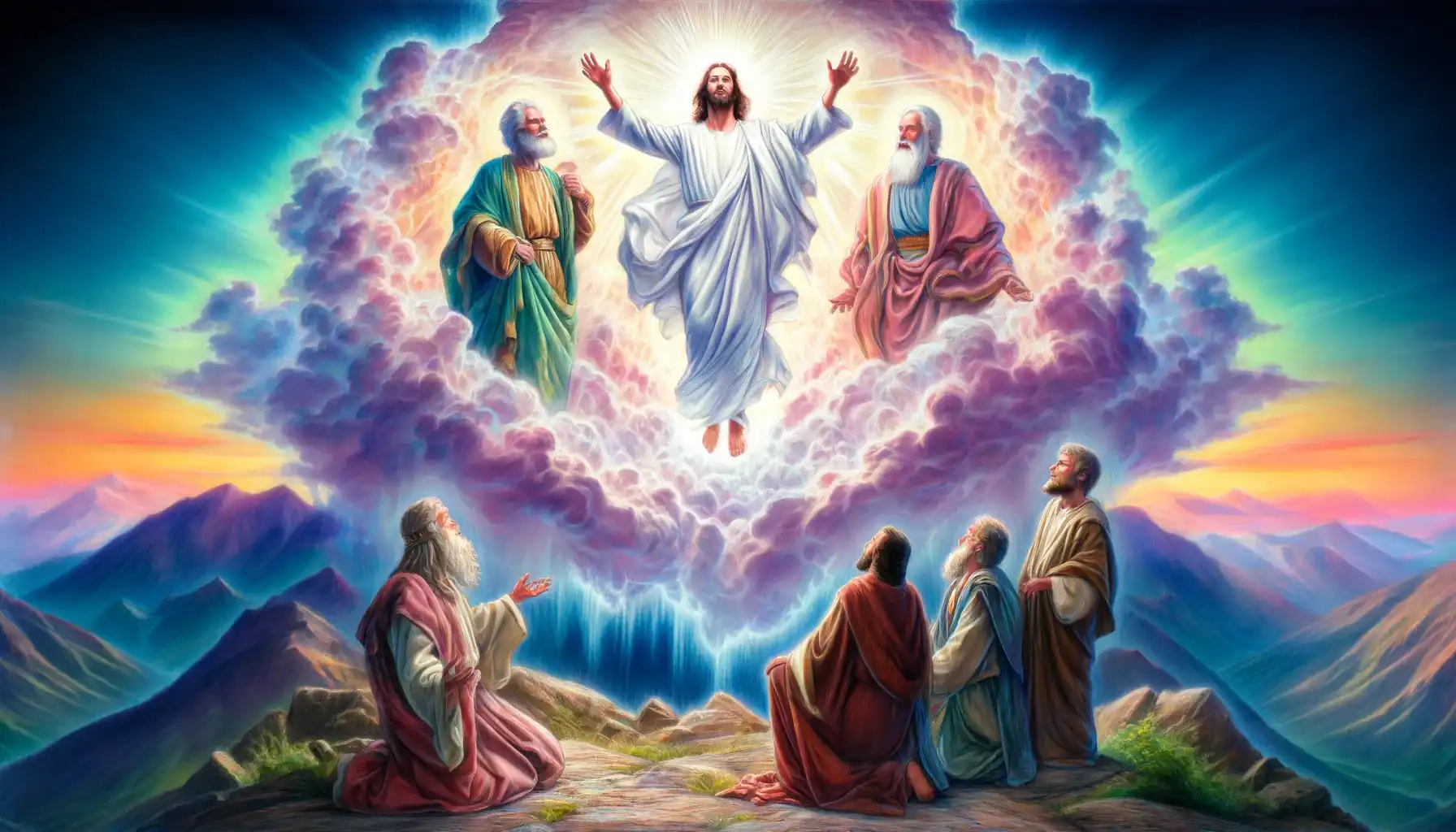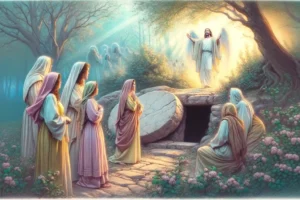
The Transfiguration of Jesus
The Transfiguration of Jesus is a pivotal event in the New Testament, recorded in Matthew 17:1-9. It marks a significant moment where Jesus reveals His divine glory to three of His closest disciples.
- Participants – Jesus took Peter, James, and John up a high mountain by themselves to witness the event.
- Divine Transformation – Jesus was transfigured before them; His face shone like the sun, and His clothes became as white as light.
- Appearance of Moses and Elijah – Moses and Elijah appeared and were talking with Jesus, symbolizing the Law and the Prophets, respectively, which testify to Jesus.
- Divine Voice – A bright cloud enveloped them, and a voice from the cloud said, “This is my Son, whom I love; with him I am well pleased. Listen to him!”
- Reaction of the Disciples – The disciples fell to the ground, terrified by the voice. Jesus came and touched them, telling them not to be afraid.
- Command of Secrecy – After descending from the mountain, Jesus instructed the disciples not to tell anyone about the vision until after the Son of Man had been raised from the dead.
Contextual Background
The Transfiguration of Jesus is recounted in Matthew 17:1-9, situated shortly after Jesus begins to disclose His impending death and resurrection to His disciples. This event serves as a pivotal moment in Jesus’ ministry, providing a divine affirmation of His messianic identity and mission, directly witnessed by three of His closest disciples—Peter, James, and John.
Theological Insights
- Revelation of Divine Glory
- The Transfiguration is a manifestation of Jesus’ divine nature. His appearance changes dramatically—His face shining like the sun and His clothes becoming dazzling white, which is symbolic of purity and divine glory. This transformation serves to reinforce His unique status as the Son of God.
- Presence of Moses and Elijah
- The appearance of Moses and Elijah during the Transfiguration is highly significant. Moses represents the Law, and Elijah represents the Prophets. Their presence with Jesus symbolizes the fulfillment of both the Law and the Prophets through Him. It connects Jesus’ teachings and actions directly to Jewish tradition and scriptural prophecy.
- The Divine Voice from the Cloud
- The voice from the cloud declaring, “This is my Son, whom I love; with him I am well pleased. Listen to him!” echoes the baptism of Jesus in Matthew 3:17, reinforcing His divine sonship and authority. This divine endorsement highlights the importance of Jesus’ teachings and the imperative for the disciples to heed His words.
- Disciples’ Reaction and Instruction
- The disciples’ reaction—falling face down in fear—reflects the overwhelming awe and terror that divine revelations can inspire. Jesus’ response, telling them not to be afraid and touching them, is a reassurance of His protective, human presence alongside His divine nature.
- Jesus’ command to keep the vision secret until after His resurrection underlines the eschatological significance of the event. It was meant to be fully understood only in the light of the resurrection, which would illuminate the full meaning of His life and mission.
Cultural and Historical Impact
- Christian Doctrine and Liturgy: The Transfiguration has been a fundamental event in Christian theology, emphasizing Jesus’ divinity as equal to His humanity. It is celebrated as a major feast day in many Christian denominations, highlighting its doctrinal importance.
- Artistic Representation: The Transfiguration has inspired numerous artworks, which often depict the radiant Christ with Moses and Elijah in a mystical, illuminated mountain setting. These artworks serve to visually communicate the theological themes of the event, such as divine revelation, fulfillment of prophecy, and the bridging of heaven and earth.
- Spiritual Significance: For believers, the Transfiguration is a source of spiritual encouragement, providing a glimpse of the future glory of Christ and the promise of transformation for all who are united with Him in faith.
Conclusion
The Transfiguration in Matthew 17:1-9 is more than a historical event; it is a profound theological revelation that affirms Jesus’ divine identity, His fulfillment of Jewish scripture, and His ultimate authority. It serves as a pivotal moment of transformation, not only for Jesus in the eyes of His disciples but also for all who understand and embrace its implications for Christian faith and practice.



